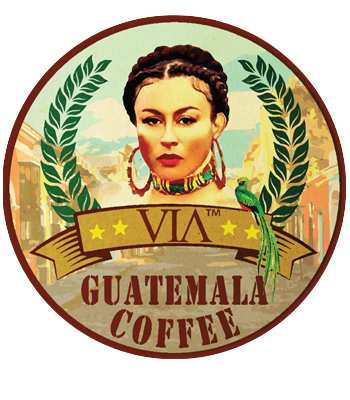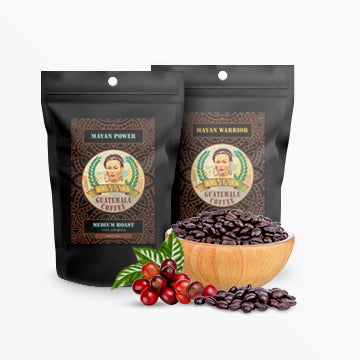Best Espresso Coffee Beans: Ultimate Guide 2025
Over 2 billion cups of espresso are consumed worldwide every day. Behind each perfect shot lies a crucial decision: which coffee beans to use. Selecting the right espresso coffee beans isn't just about preference, It's the foundation of everything from your morning latte to that perfect after-dinner affogato.
Understanding Espresso Coffee Beans: The Basics
Espresso isn't a type of bean. It's a brewing method that pushes hot water through finely ground coffee under pressure. This intense process demands specific qualities from your beans.
Not all coffee beans perform well as espresso coffee beans. The best ones deliver rich flavors that stand up to the concentrated extraction while providing that golden crema on top. Think of espresso as a magnifying glass that amplifies both good and bad qualities in your beans.
Dark vs. Medium Roasts for Espresso
Dark roasts have long been the go-to for espresso coffee beans. The extended roasting breaks down acids and creates those sweet caramelized sugars that espresso lovers crave. You'll typically get chocolate, caramel, and nutty flavors with that classic bittersweet finish from dark roast espresso coffee beans.
But times are changing. Many coffee shops now offer medium roast espresso coffee beans. These lighter options keep more of the bean's natural flavors intact. They bring brighter, fruitier notes to your cup that traditional Italian espresso drinkers might not recognize. The choice between dark and medium ultimately comes down to your flavor preferences.
Single Origin vs. Blends
Most espresso coffee beans you'll find are blends. There's good reason for this.
Espresso Blends
Coffee roasters create blends by combining beans from different regions to balance strengths and weaknesses. A typical espresso blend might include:
-
Brazilian beans for body and chocolate notes
-
Colombian beans for sweetness and mild acidity
-
Ethiopian beans for floral or fruity highlights
-
Robusta beans for extra crema and caffeine kick
These carefully crafted blends deliver consistent results shot after shot. Blended espresso coffee beans forgive small errors in brewing and perform reliably across different machines and grinders.
Single-Origin Espresso
Single-origin espresso coffee beans come from one specific region or even a single farm. They offer unique flavor profiles you won't find in blends. A Kenyan single-origin might burst with bright berry notes, while an Indonesian bean might deliver earthy, spicy undertones.
The downside? Single-origin espresso coffee beans can be finicky. They often require precise temperature control and dialing in your grinder just right. But when you nail it, the results can be spectacular.
Top Regions for Espresso Coffee Beans
Certain places grow beans that shine in espresso machines:
Brazil
Brazilian espresso coffee beans set the standard for traditional espresso. Their naturally low acidity and full body create that classic espresso profile with chocolate and nut flavors. Nearly 80% of espresso blends worldwide contain Brazilian beans.
Guatemala
Guatemalan espresso coffee beans deliver exceptional complexity and balance. Known for their distinctive spicy, chocolatey profiles with bright acidity, these beans create shots with remarkable depth. The volcanic soil of regions like Antigua produces espresso coffee beans with notes of cocoa, cinnamon, and subtle fruit undertones that perform brilliantly in both straight shots and milk-based drinks.
Colombia
Colombian beans strike a perfect balance. They offer moderate acidity, good body, and reliable sweetness. This versatility makes them common in premium espresso coffee beans blends.
Ethiopia
Ethiopian espresso coffee beans bring complexity and exciting flavors. Think jasmine, bergamot, or blueberry notes in your cup. Traditional espresso lovers might find them challenging, but they've become favorites in specialty coffee shops.
Italy
While Italy doesn't grow coffee, Italian roasters define espresso tradition. Their espresso coffee beans blends often include Robusta for that thick crema and powerful punch that cuts through milk in cappuccinos and lattes.
Arabica vs. Robusta for Espresso
The species matters as much as the origin:
Arabica
Arabica beans make up about 60% of world coffee production. They deliver complex flavors but less caffeine. Most premium espresso coffee beans are 100% Arabica, offering nuanced taste with moderate strength.
Robusta
Robusta packs nearly twice the caffeine and produces more crema. Many high-end Italian espresso coffee beans include 10-20% Robusta to create that distinctive intense profile and better performance in milk drinks.
Quality matters enormously with Robusta. Bad Robusta tastes like rubber or burnt wood. Good Robusta adds valuable body and punch to espresso blends.
Fresh Roasting: The Deal-Breaker
Freshness trumps almost everything else when choosing espresso coffee beans. Coffee peaks in flavor 3-14 days after roasting, with best espresso performance typically between 7-21 days.
Always check roast dates when buying espresso coffee beans. Even the finest beans will produce flat, lifeless shots if they've been sitting for months. Fresh beans create that beautiful tiger-striped extraction and rich crema that espresso lovers chase.
Finding Your Perfect Espresso Coffee Beans
The \"best\" espresso coffee beans depend entirely on your taste preferences:
-
For traditional, chocolatey espresso: Choose dark roast Brazilian or Italian-style blends
-
For bright, complex espresso: Try medium-roast single-origin beans from Ethiopia or Kenya
-
For balanced, versatile espresso: Look at medium-dark blends combining multiple regions
-
For maximum crema and intensity: Consider blends with quality Robusta
Try different espresso coffee beans to discover what creates your ideal shot. The perfect espresso experience is personal. The journey of exploration is half the fun.
Frequently Asked Questions
What makes coffee beans good for espresso?
Good espresso coffee beans typically have low acidity, medium to high body, and flavor profiles that withstand intense extraction. The best espresso coffee beans create rich shots with balanced sweetness and bitterness, plus a golden layer of crema on top. Freshness is crucial, as stale beans won't produce quality espresso regardless of origin.
Are espresso beans different from regular coffee beans?
Espresso coffee beans aren't inherently different from regular coffee beans. The difference lies in how they're roasted and ground. Beans labeled as "espresso beans" are typically roasted darker and longer to withstand high-pressure extraction and develop the caramelized sugars that give espresso its signature flavor profile.
Which roast level is best for espresso?
Traditionally, dark roasts work best for espresso coffee beans because they reduce acidity and increase body, creating that classic espresso flavor. However, medium roasts have gained popularity in specialty coffee shops for bringing more origin-specific flavors and brightness to espresso. Your preferred roast level depends on whether you favor traditional Italian-style espresso or more contemporary flavor profiles.
Should I use single-origin or blended espresso coffee beans?
Blends offer consistency and forgiveness, making them ideal for beginners or those who prefer traditional espresso. Single-origin espresso coffee beans provide unique flavor experiences but may require more precise brewing parameters. Many espresso enthusiasts keep both on hand, using blends for daily brewing and single-origin beans for special occasions.
How fresh should espresso coffee beans be?
For optimal results, use espresso coffee beans between 7-21 days after the roast date. Coffee needs time to degas after roasting, but using beans that are too fresh can result in inconsistent extraction. Beans older than a month will produce significantly less crema and flat-tasting espresso. Always check the roast date when purchasing.
Can I use 100% Arabica beans for espresso?
Absolutely. Most specialty espresso coffee beans are 100% Arabica, prized for their complex flavors and aromatic qualities. While traditional Italian espresso often includes some Robusta for extra body and crema, many coffee enthusiasts prefer the nuanced flavors of pure Arabica espresso coffee beans, especially for light to medium roasts.
How should I store my espresso coffee beans?
Store espresso coffee beans in an airtight container away from light, heat, moisture, and strong odors. Contrary to popular belief, refrigerating or freezing can actually damage beans through condensation unless properly vacuum-sealed. For best results, buy smaller quantities more frequently rather than storing large amounts long-term.
Conclusion
Choosing the right espresso coffee beans means balancing origin, roast level, freshness, and processing methods. Whether you prefer old-school Italian blends or cutting-edge single-origin offerings, the world of espresso coffee offers endless possibilities.
Your equipment and technique matter too. Even the finest espresso coffee beans need proper preparation to shine. But with quality beans as your foundation, that perfect morning shot is absolutely within reach. Start experimenting today.






